NIST’s work right now is focused on ensuring that information and evidence related to the June 24, 2021, partial collapse of the Champlain Towers South condominium is identified, collected and preserved, in support of NIST’s technical investigation into the likely cause of the collapse.
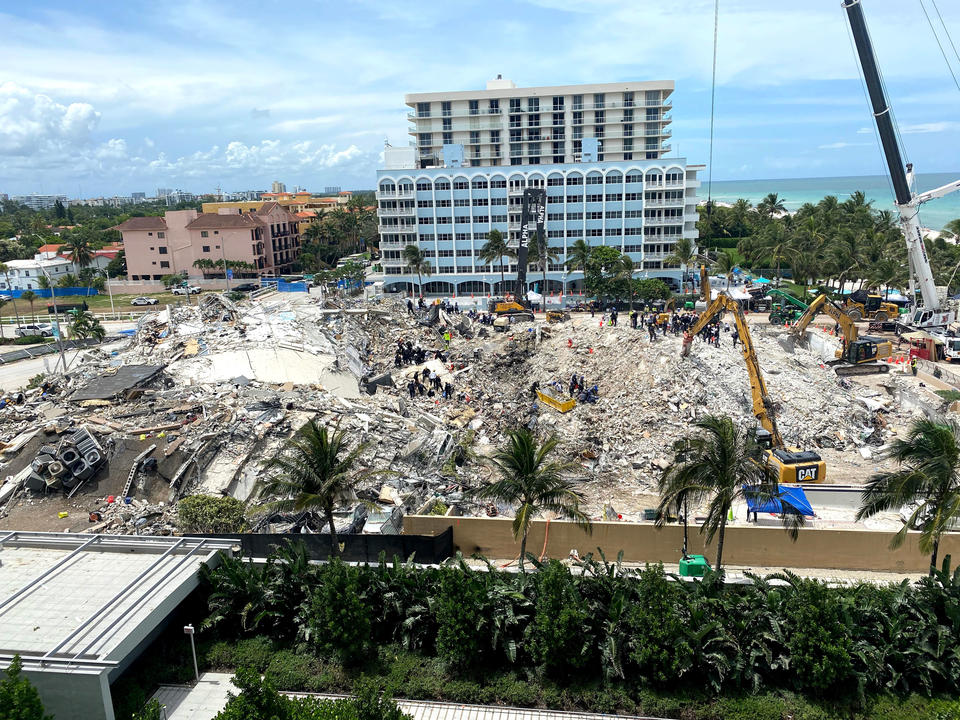
Remote Sensing of the Site
NIST staff members are coordinating and leading remote sensing efforts to determine where pieces of evidence were located in the debris pile. They are supported by experts from the Federal Emergency Management Agency (FEMA), Florida State University, the Miami-Dade Fire Rescue Department, the National Science Foundation (NSF), the U.S. Army Corps of Engineers and the U.S. Geological Survey (USGS).
Lidar — which sends out rapid pulses of light and records the reflections to create a type of map — is being used to record the locations of building materials or elements of potential interest and changes to the site as debris is removed. NIST is taking daily high- and low-resolution lidar scans of the site from balconies on adjacent buildings to the north and south of the Champlain Towers South site. Time-lapse cameras are also recording the rapidly changing scene.
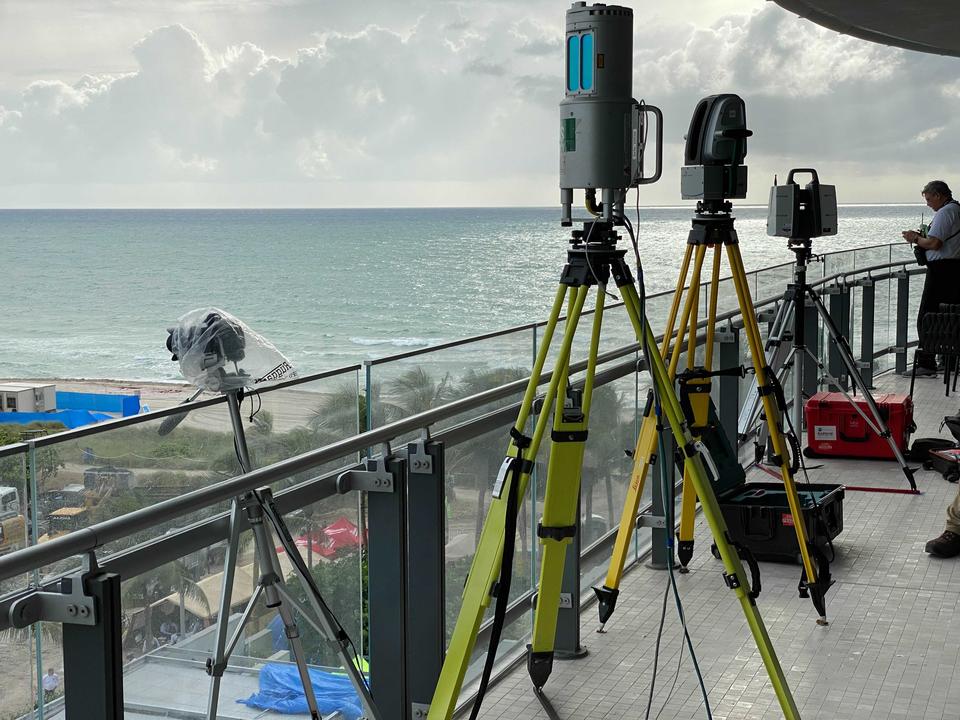
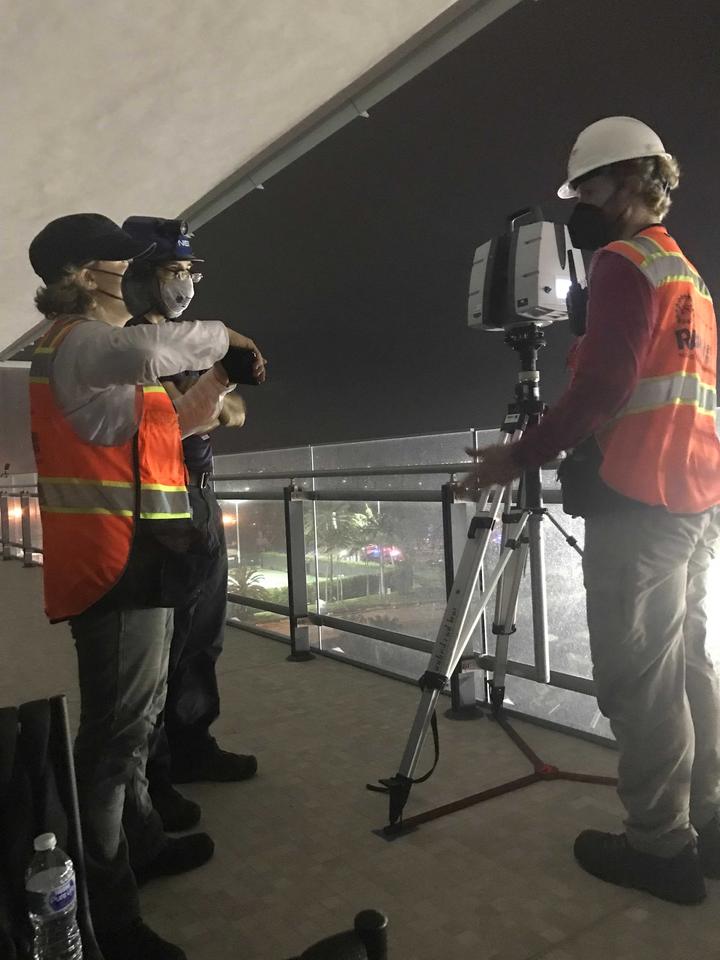
Drones carrying cameras are being flown over the site to help with the geotagging of evidence and to capture changes at the site. Geotagging provides information on the exact location of evidence before it is removed.
Evidence Tagging and Preservation
The NIST team continues to refine and update procedures for evidence identification, marking and tagging, and has collected more than 200 building elements including columns, beams and pieces of concrete slab. All of these items are currently being preserved by the Miami-Dade Police Department.
NIST will be deploying an electronic evidence tagging system that uses RFID chips so that electronic records are associated with every piece of evidence collected.
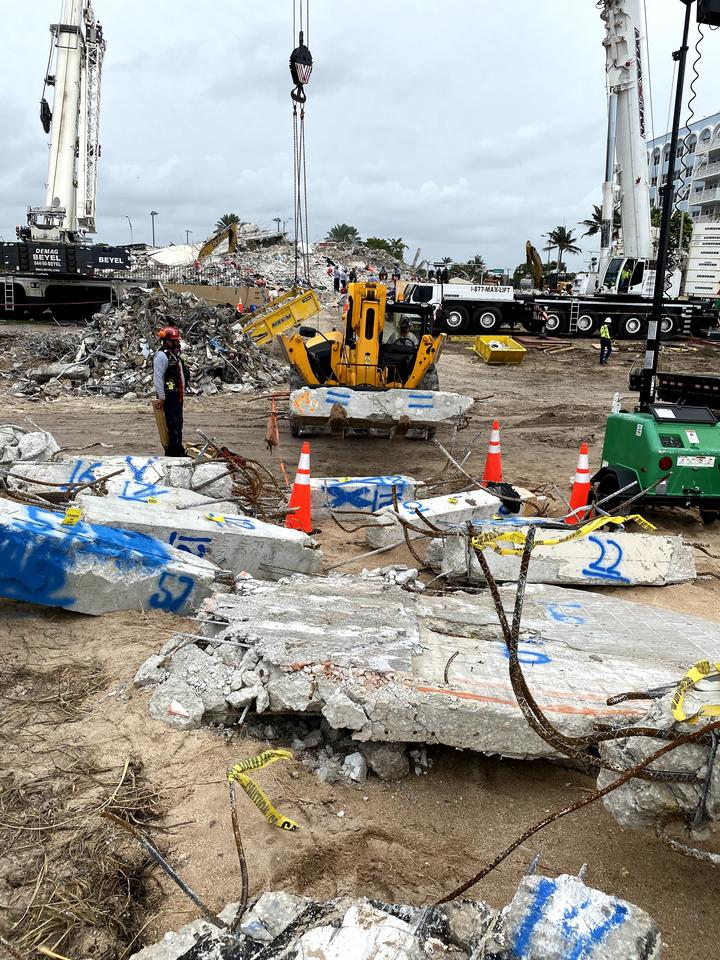
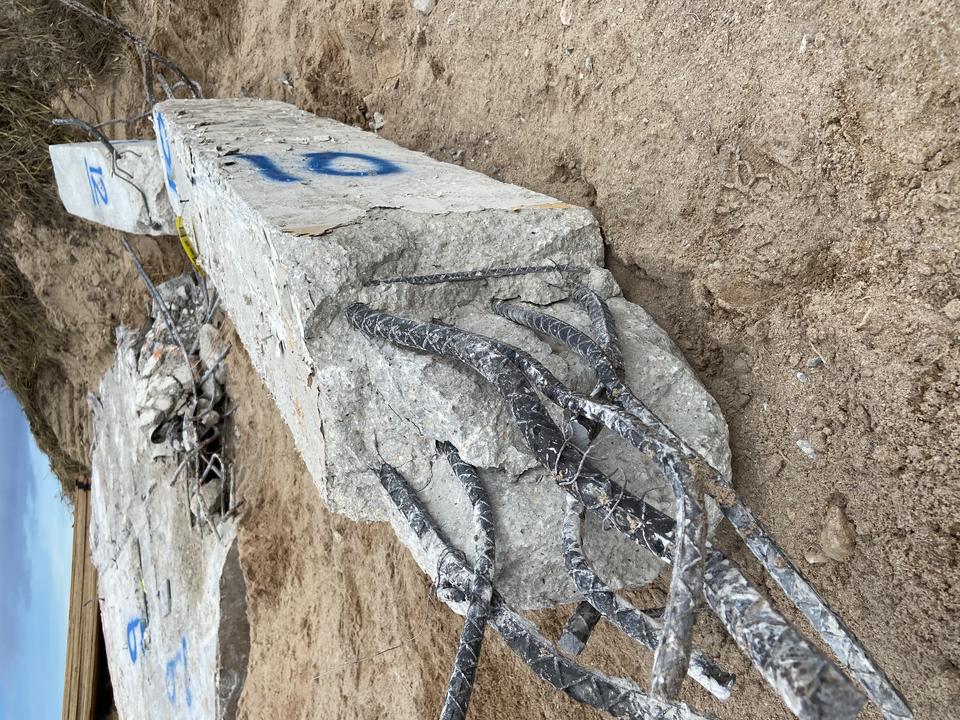
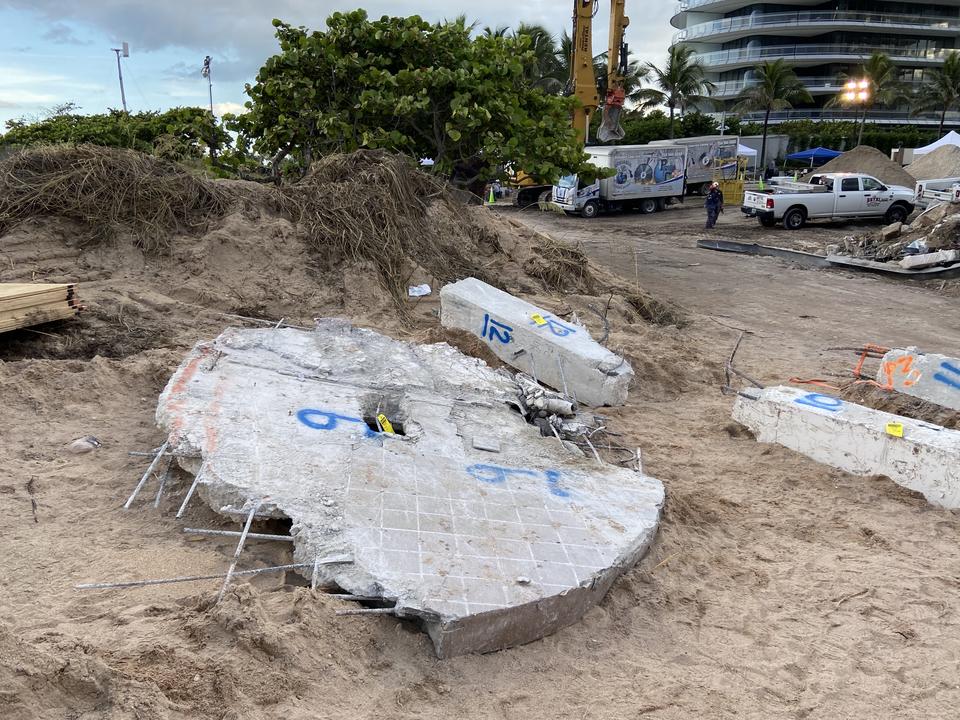
Building elements such as columns, beams and floor slabs are identified, removed from the debris pile, tagged and moved to a holding area before the evidence is transported by police escort to an offsite storage facility where it will be preserved for study.
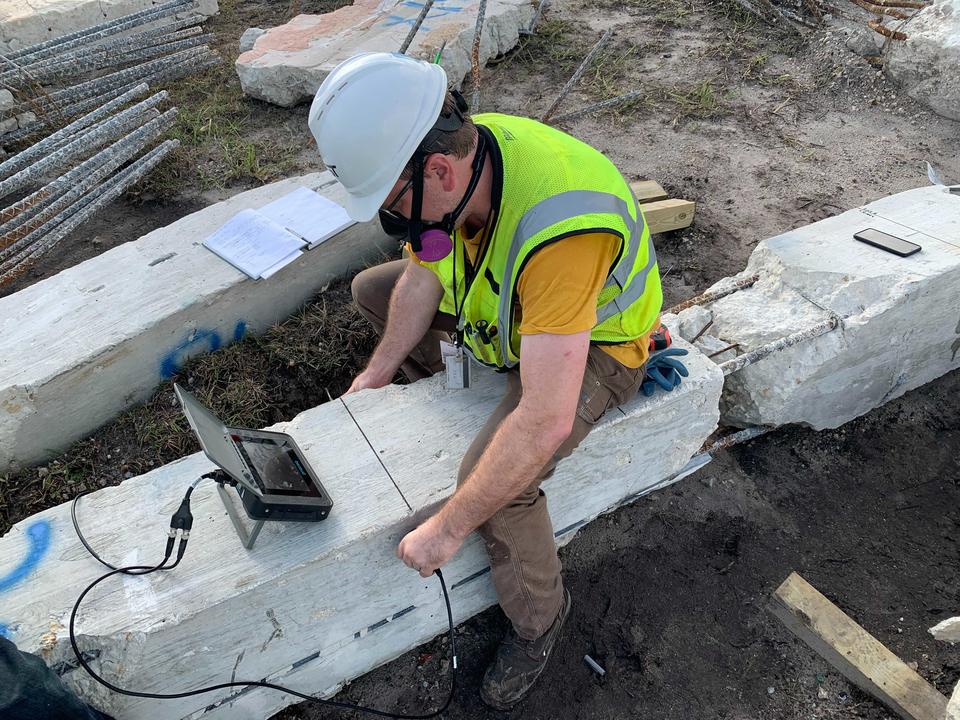
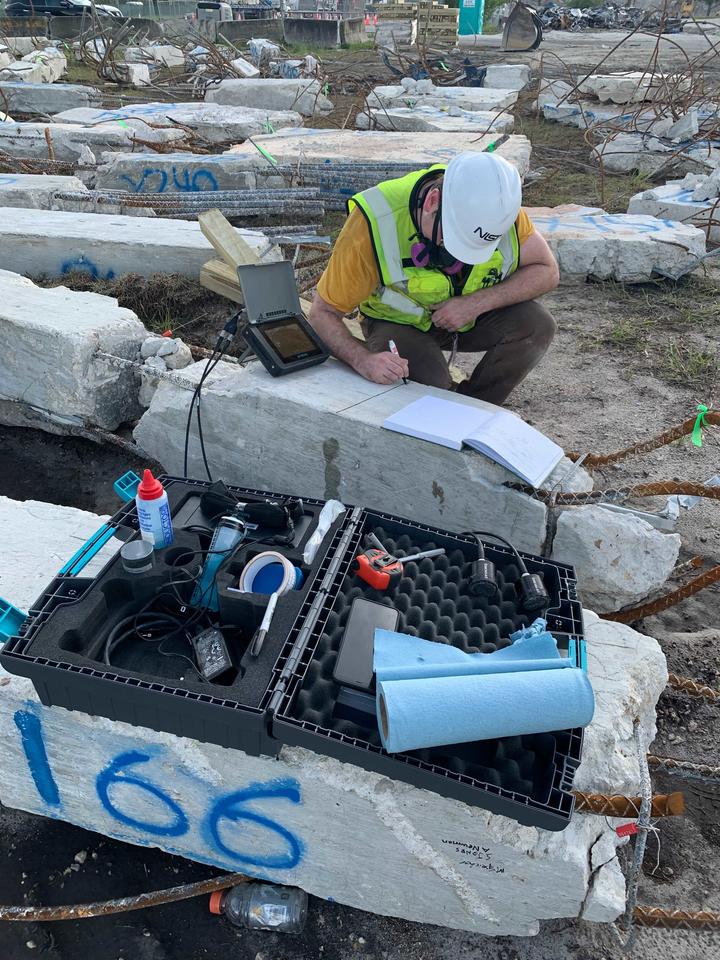
What We Can Learn From Champlain Towers North
NIST experts have visited the Champlain Towers North condominium to gain a better understanding of the Champlain Towers South building, which had a similar design and construction.
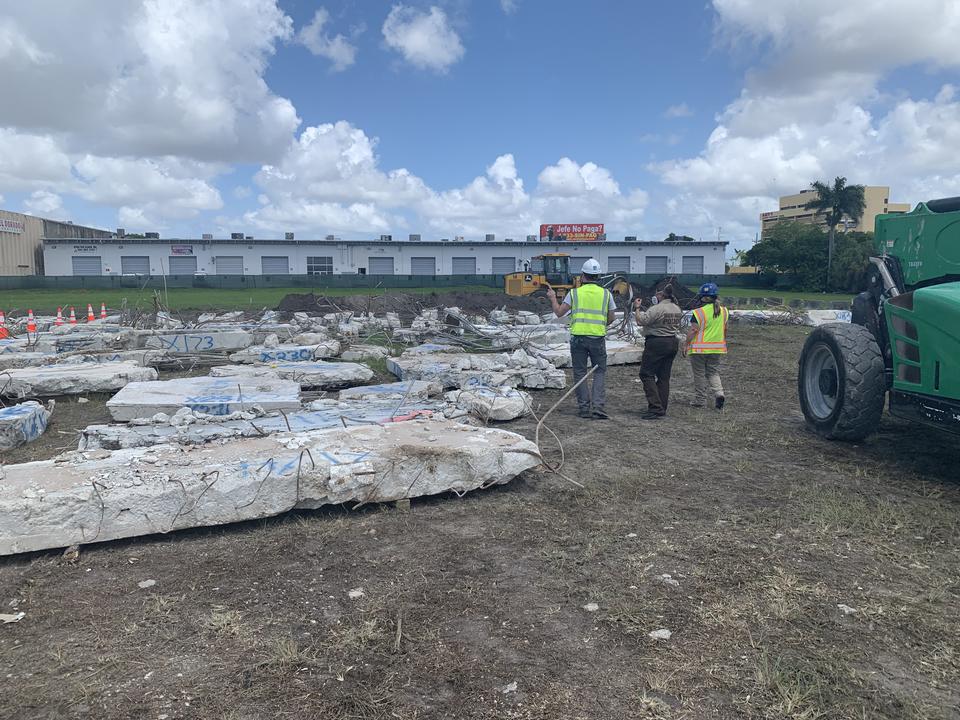
Working with the Rapid Response Research (RAPID) Facility of NSF’s Natural Hazards Engineering Research Infrastructure (NHERI) Program, NIST has installed accelerometers to measure building vibrations and a seismometer to measure ground vibrations at the Champlain Towers North condominium. The data from these devices will be used to validate computer modeling of Champlain Towers South.
This work is not an evaluation of the condition of Champlain Towers North. Safety evaluations of buildings are being overseen by city and county authorities, and NIST does not have a role in those efforts.
Next Steps
NIST is in the process of putting together the National Construction Safety Team that will lead the technical investigation.

